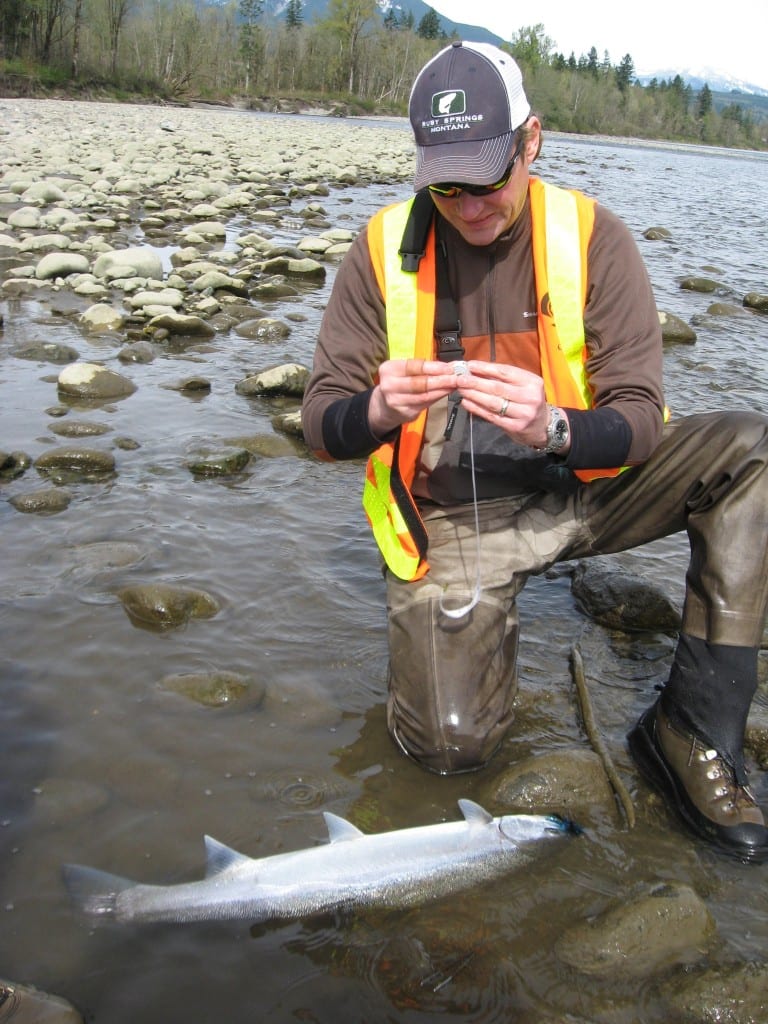 Natural Resources and Environmental Planning field surveys carried out this spring showed that steelhead redd (or nest) counts in the 27 miles of river below City Light’s hydroelectric project are 20 percent higher than any other year since 1997.
Natural Resources and Environmental Planning field surveys carried out this spring showed that steelhead redd (or nest) counts in the 27 miles of river below City Light’s hydroelectric project are 20 percent higher than any other year since 1997.
By Dave Pflug, Seattle City Light fisheries biologist
Natural Resources and Environmental Planning field surveys carried out this spring showed that steelhead redd (or nest) counts in the 27 miles of river below City Light’s hydroelectric project are 20 percent higher than any other year since 1997.
More important, since our flow management measures were implemented in 1995, the proportion of steelhead spawning in the Skagit River between Newhalem and Rockport, the reach most affected by City Light operations, has slowly increased when compared to the totals for the whole river system.
To this day, the Skagit River is perhaps one of Washington’s finest steelhead fishing rivers. But overall numbers of the fish in the Skagit and most other Western Washington rivers have been in decline since the heydays of the 1900s, culminating in 2007, when Puget Sound steelhead were added to the federal endangered species list.
The observed declines likely stem from habitat destruction, hatchery operations, ocean conditions and the effects of dams. This last measure is where City Light’s operations fit into the recovery of steelhead in the Skagit River.
Since 1995 the utility has implemented a set of flow measures that reduce the rate and frequency of daily flow down ramping after peak generation periods, as well as maintain minimum flow requirements throughout the egg incubation period. These measures reduce the risk of drying, flooding, or scouring redds during spawning and incubation periods. The improved flows also minimize fluctuations that can strand juvenile fish on gravel bars during migrations.
Other fish species have also benefited.
The average numbers of pink salmon downstream of the dams have increased 400 percent since the early 1980s. Chum salmon numbers have increased eight-fold. Chinook populations are the healthiest of any river system in Puget Sound.
These steady increases suggest that our flow protection measures appear to be part of the Skagit steelhead recovery solution rather than part of the problem.
